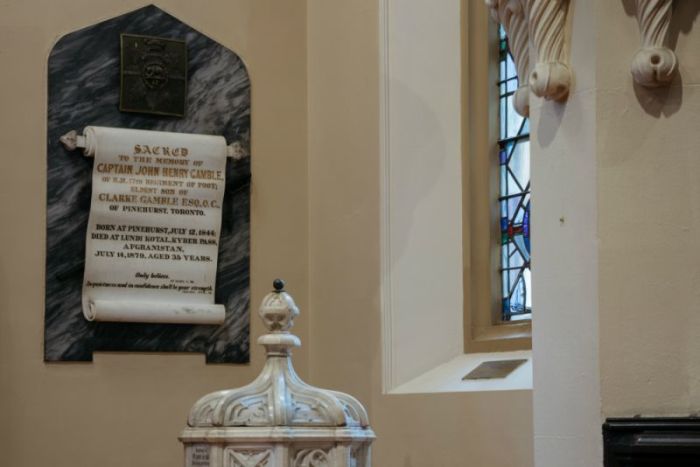Spires and Crosses: Discovering History Among the Pews
The old church you drive by every day is probably one of the most historic buildings in town.
That is even the case in London, where the famed Westminster Abbey is far older than many of the other iconic buildings — 10 Downing Street, Buckingham Palace and Parliament at Westminster Palace.
Back in Canada and the United States, the two oldest buildings in most county seats are almost always the county courthouse and the church of the denomination that was considered the most prestigious in the 19th century (more often than not mainline Protestant; think Methodist, Episcopal/Anglican or Presbyterian).
The interior fittings and fabric of these churches are often a lesson in local history.
That's because many citizens were honored after their death with either burial in the churchyard or through a memorial inside the church.
Today, burials in churchyards and even within a church itself are rare, but the reminders of the past are visible through gravestones and memorial plaques or monuments on the walls of the nave.
In Canada's largest city of Toronto, the brick Gothic Revival architecture of the Cathedral Church of St. James (Anglican) isn't particularly notable.
Yet, inside one finds a treasure trove of early Toronto and, by extension, Canadian history.
Scattered across the nave, the transepts and even the narthex of St. James are dozens of old tombstones, plaques and memorials to names from a distant past.
Most the names are unfamiliar, but thankfully through the magic of the internet one can often find significant historical material through a quick search on Google.
That was the case with Captain John Henry Gamble, whose memorial is situated behind the old baptismal font in the cathedral's north transept.

Gamble's memorial (pictured above) gives more information than most. It says he was the eldest son of a prominent local lawyer and names the British Army regiment he served with when he died in 1879 during colonial-era wars in the Kyber Pass.
Literally 30 seconds later, through Google, I found out he joined the British Army after graduating from Sandhurst, the British version of West Point, in 1862. And as it turns out, Gamble didn't die fighting for king and country, as the memorial implies. Rather, dysentery took his life.
History similar to Gamble's can be found everywhere. All you have to do is look.
Spires and Crosses is published every Sunday.



























